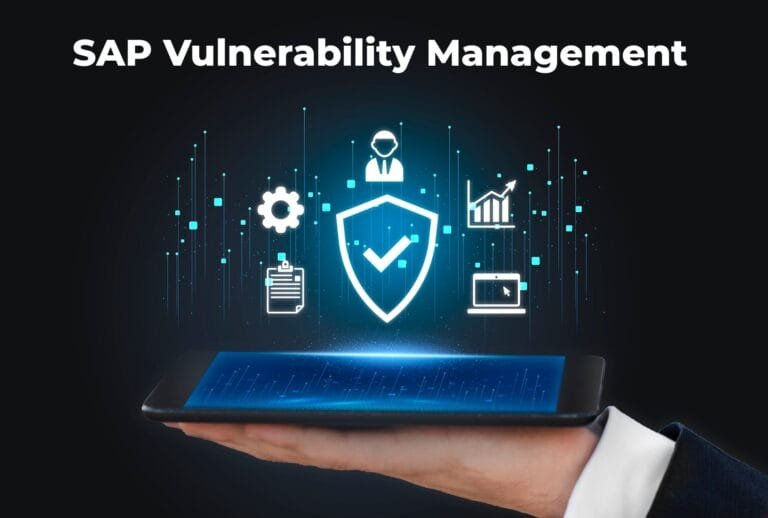What Are The Three Categories Of The Detect (De) Function Of The Nist Cybersecurity Framework?
The Detect (DE) is essential in the NIST Cybersecurity Framework since it serves as the framework that aids in detailing to an organization how to manage and mitigate cybersecurity risk. So, The core functionality of “Detect” emphasizes the development and implementation of the suitable activities required to recognize the occurrence of a cybersecurity event in a timely fashion. This role, therefore, plays a very crucial function in ensuring that organizations are not only prepared to defend but are armed and able to spot threats as they occur for fast and effective reaction.
Functions under the category of Detect are broken down into three broad categories that are designed to help control and oversee different aspects of processes regarding detection. These include Anomalies and Events, Security Continuous Monitoring, and Detection Processes. Each of these categories plays into an all-encompassing way of monitoring an organization’s digital environments for abnormal activity that may indicate security issues while keeping them all running in a state of overall health through constant vigilance. A better understanding of these categories and operationalizing them would allow organizations a better capability to identify the threats much before they result in their losses, which is one of the key enablers in the very dynamic cyber threat landscape.
Category 1- Anomalies and Events
The first category of the Detect function in the NIST Cybersecurity Framework provides “Anomalies and Events.” This will be very fantastic key as it includes the detection and recording of activities that may indicate any possible cybersecurity threat or risk to an organization. Essentially, it serves as the framework’s eyes, scanning for signs of unusual activity that deviate from the norm.
Such anomalies may regard sudden changes in performance in outbound network traffic or attempts at gaining access to certain resource areas. On the other hand, “events” are used to denote occurrences that would impact the security of information systems, for instance, a breach of security policies or the identification of malware. This is in a bid to ensure that any abnormal activity is identified fast and accurately; there needs to be robust systems and processes in place to detect such.
This is done through the use of intrusion detection systems (IDS) and making use of both system and network logs in combination with information from the security information and event management (SIEM) systems. Aggregation and analysis with such tools may help to identify potential security incidents already at their root or beginning stages. That helps cybersecurity teams as they will understand what normal activities are. That is, they can respond quickly and effectively any time they notice that something different can be a likely threat, possibly related to a security incident.
Category 2- Security Continuous Monitoring
The second category of the Detect function, “Security Continuous Monitoring,” underscores continuous vigilance in the information systems and network of an entity. Continuous monitoring provides a near-real-time view of the security state of information systems. Continuous monitoring quickly detects any changes or threats to the systems.
The effective use and sustainability of the monitoring technologies are based on continuous observation in each operation layer conducted in an organization. The study of this kind includes surveillance of networks, physical surveillance, and surveillance of user activity and behavior. Organizations should keenly monitor these aspects to find out security problems that may not be visible at the first instance, e.g., slowly leaking data or progressively large network intrusions.
Effective security continuous monitoring that consists of a few practice areas: deploying automated systems for the tracking of network traffic and log data, using advanced analytics to interpret this data, and integrating threat intelligence to make sense of the risks that are on the horizon. These practices are the ones to prepare an organization for the necessary prediction and prevention of cybersecurity threats before they grow into significant breaches. Doing so will, in turn, ensure the organizational information assets are not only maintained but also proactively defended with the support necessary to make sure they stay compliant with regulatory requirements and at a general security posture level.
Category 3- Detection Processes

The “Detection Processes” third category in the ‘Detect’ function of the NIST Cybersecurity Framework addresses developing and managing processes underpinning the detection of cybersecurity events. The significance of this category is that it should be used to ensure the preparedness of the detection tools and strategies that the organization has in place. The tools should be tested and well-tuned to derive the most security out of it for the organization.
Detection Processes include developing, maintaining, and continually improving procedures to detect cybersecurity threats. This includes the policies on how to handle detections, tracking of alerts to the escalation within the organization, and the way incidents are documented and reported. These should be clear, fully documented processes known to all relevant constituencies in the organization, enabling well-coordinated, rapid security responses.
The last category includes activities of testing and validating the detection systems. It is during the realization of continuous audits and simulations that the approximation of the effectiveness of the detection process can be made, and if necessary, it can be tuned up accordingly. This is an iterative process that hones the detection capabilities with time, and the organization always stays prepared to grapple with the effectively evolving landscape of cyber threats. With this robust detection process in place, organization capabilities are strengthened in identification and efficient managing and mitigating of threats.
In conclusion
In conclusion, the Detect function in the NIST Cybersecurity Framework, when parsed down into the subsections of Anomalies and Events, Security Continuous Monitoring, and Detection Processes, will provide an impactful roadmap for organizations looking to be able to detect threats to their cybersecurity in efficient and effective manners. The organizations will thus be in a position to enhance their ability to identify, respond fastly, and report, subsequently lowering the possible damages due to cyber attacks through the integration of such categories in their cybersecurity strategies. The above applies not only to mitigate potential damage by cyber attacks but also includes general strengthening of the security posture. These constantly changed natures of cyber threats best detect strategies that must be polished continuously and enforced. Organizations best in class at these arenas of detection can protect their most critical assets and maintain trust by operating in the world, which, more than ever, is going digital.
FAQs
What is the Detect function in the NIST Cybersecurity Framework?
The Detect function is part of the NIST Cybersecurity Framework designed to help organizations identify when a cybersecurity event occurs. It ensures that threats are spotted quickly and effectively.
What are the three categories of the Detect function?
The three categories include Anomalies and Events, Security Continuous Monitoring, and Detection Processes. Each plays a crucial role in identifying and responding to security incidents.
How does the ‘Anomalies and Events’ category help in cybersecurity?
This category focuses on detecting unusual activities that may indicate a security threat, using tools like intrusion detection systems to monitor and alert on these anomalies.
What is meant by ‘Security Continuous Monitoring’?
Security Continuous Monitoring involves ongoing surveillance of an organization’s networks and systems to detect and respond to threats in real time, ensuring constant security vigilance.
Why are ‘Detection Processes’ important in cybersecurity?
Detection Processes involve setting up and maintaining the procedures that support the detection of cybersecurity threats. This ensures that detection tools are effective and incidents are handled swiftly.







